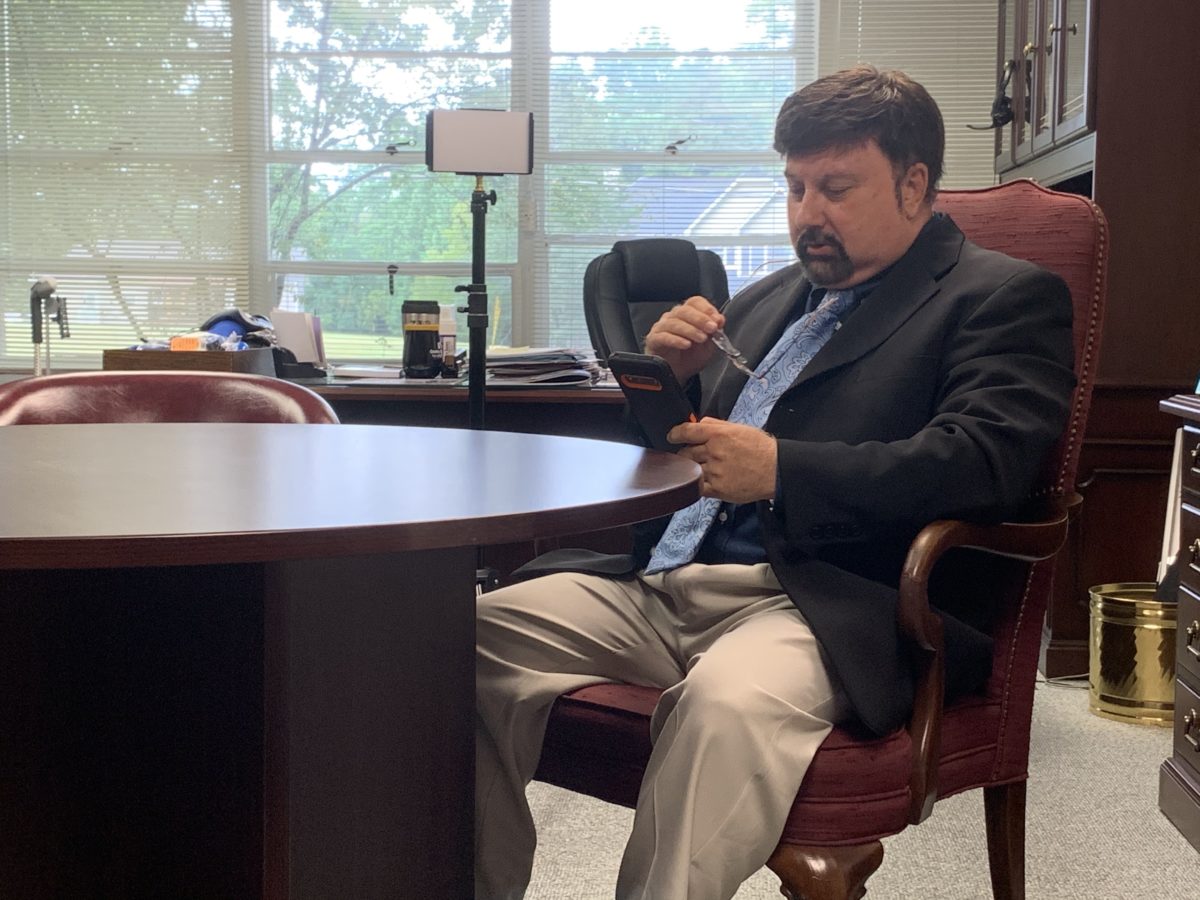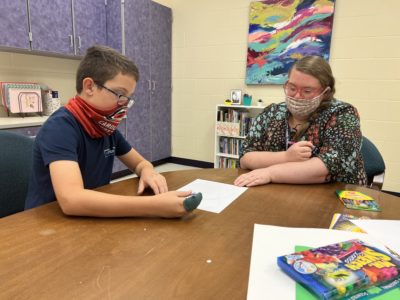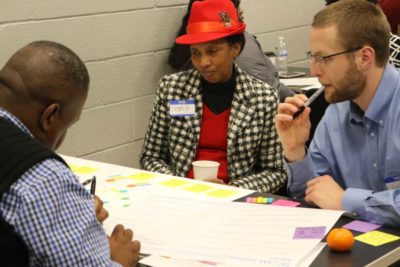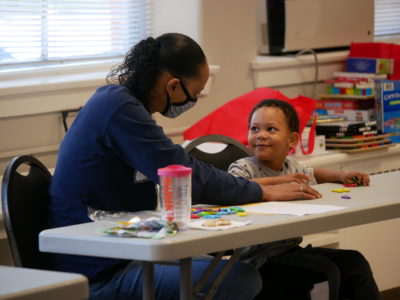
|
|
When he thinks about the anxiety, depression, and trauma that students in his schools experience, Iredell-Statesville Schools Superintendent Jeff James feels a range of emotions. And he remembers when, during one of his first years as an assistant principal in the district, a “high-flying student” in the ninth grade died by suicide.
The entire district shifted then to focus on mental health supports, applying what he called a “full-court press.” He said no students died by suicide for several years after that.
But when the economy tanked in 2008 and school budgets were cut, student support programs were among the first to go.
“That’s what bothers me,” James said. “The first thing that gets cut is support services. And those are the most critical.”
More people in the community seem attuned to that now, district leaders said recently.
Figuring out how to help is top priority
The pandemic, school interruptions, and all that has followed have exacerbated mental health issues. While public disagreements over masks enter the mental health fray, Iredell-Statesville district leaders say mental health support has been a big challenge since before the pandemic. They are focused on getting students the help they need, and they’ve had to get creative with how to fund it.
“I don’t think that Iredell-Statesville has any more of an issue than any neighboring counties or states,” said Kelly Marcy, the district’s executive director for student services. “It’s really just become an epidemic of issues in adolescent children and adult mental health.”
The solution, for now, is innovation through temporary funding. The district has managed to boost the number of social workers and counselors in schools, is training all adult employees on mental health, and contracted with an outside agency to secure mental health services in each school.
The result has been an increase in identifying and securing services for students in need, but district leaders worry about repeating the mistake of so many years ago — losing the funding and, thereby, some of the positions and programs that are making a difference.
“How do we embed that work, how do we maybe shift other funding to cover those positions?” Marcy said. “I think that’s kind of where we’re at right now with our grants. How can we get permanent funding?”
Over the past six years, the district has fit services together like puzzle pieces, working to fill holes and provide wrap-around support for students and adults in school buildings.
As in many districts, there have been plenty of barriers. The specialized support positions, such as social workers and counselors, were understaffed. When students were referred for outside services, families had problems — getting time off from work, lining up transportation, and not having insurance to cover them.
“We would refer a student out to an agency, and then we would just hope they’d get to the appointment,” Marcy said. “We’d hope that they could pay for it. And we didn’t have a lot of success with that.”
How the team found money
With some funding, Marcy believed, the district could remove some of those barriers. The district works with a consulting firm that identifies grant opportunities. About two years ago, the system applied for three grants to bolster mental health support services. It was hoping to secure funding from at least one.
“And lo and behold, one day we got a call and we got one; the next day we got a call and we got the other; and the next day we got a call and we got the third,” Marcy said. “We never expected it.”
The grants are worth $12.5 million over five years, which the district is using to scale up prevention and intervention services. The money has gone toward increasing the number of social workers and counselors in schools and contracting with a local mental health agency that provides school-based therapy in each of the district’s 19 schools.
After budget cuts, the district was down to three social workers for about 20,000 students.
“Now we have 10,” Marcy said. “We could probably use more.”
Staffing with trained professionals is critical, says Boen Nutting, the district’s chief of strategic planning and student services. Not only can they directly help students, but they also teach other adults who work with the students.
“So if I’m a building-level principal and I have access to a social worker who understands resources in the community, or she or he may understand social emotional learning more than I might, it’s important,” Nutting said. “A lot of times, as an educator, I assume people know how to react when a child is in some kind of distress. But you begin to learn that there are a lot of folks that don’t have those resources, that don’t have that training. So not only are those supports in the building allowing us to serve kids in the building, those supports are also teaching people in the building.”
And it’s not just for teachers. Nutting said that recently a child was having suicidal ideation and the only adult who knew about it was a bus driver. It’s a reminder, she said, of the critical role that bus drivers, cafeteria staff, and custodians play in schools.
“We try to be mindful and bring these folks in and empower them,” Nutting said. “If you’re a custodian or a bus driver, as people are coming into the building in the morning, it’s important for you to greet a child, and it’s important for you to make eye contact, and to say ‘Good morning.’ Those things help us to create relationships so that that child may feel comfortable to come to you later and say, ‘Hey, I’m really sad,’ or ‘I didn’t eat breakfast this morning.’”
Nutting said she knows the training can make teachers feel they have more work to do, but she believes that much of what they’re learning is easy to integrate into current practice. And, besides, she doesn’t see an alternative.
“The extent of your influence depends on the depth of your concern for others,” she said. “So let’s all jump in together.”
The district has tried to bring in resources, too. Much of the grant money is used to contract with outside support services. These providers offer therapy and crisis interventions that the school personnel cannot, or are not allowed to, provide. And through the contract, they offer it in the school building, with someone available for each of the district’s 19 schools.
“So instead of having to take someone to the emergency room because they’re suicidal, we have a crisis worker from an agency,” Marcy said. “They’ll go to every school in our district and do that assessment, and if they need hospitalization or further outpatient treatment it happens right there. So there’s no barrier. The parent can come to the school, the assessment happens right there.”
Progress, despite continued challenges
In the 12 months from October 2020 through September 2021, these school-based mental health therapists served 258 students. That’s in addition to the more than 2,000 referrals school social workers received. In 53 cases, crisis assessments were conducted because of significant concerns about suicidal or homicidal threat. In 46 of those crisis referrals, the client and caregiver created agreeable safety plans – consulting with crisis therapists and school staff – that allowed the student to safely remain in school with support services.
Marcy said some in the community still don’t know about the expanded service offerings or realize their importance. District leaders have tried a number of things to improve communication. Then, after a student died by suicide this year, the community came to them.
“There still is that tippy-top edge of folks who are struggling regardless of the help they receive, and so we have seen an increase of students who have completed suicide,” Marcy said. “When you have these crises in the community, everybody points fingers.”
The district partnered with community organizations, the local United Way, Partners Health Management, and Children’s Hope Alliance. It scheduled a hybrid town hall at South Iredell High School’s auditorium and livestreamed it on social media in September.
Before the event started, one of the community partners walked over to Nutting. She was disappointed by the low turnout.
“We have stuff all the time that people don’t show up for,” Nutting said. “We can put all this information out there all the time, but we can lead people to water but we can’t make them drink.”
About five minutes later, she said, people started filing in. Soon, the room was full and the livestream started filling with online viewers.
“All of a sudden I thought, ‘My gosh, it’s finally happening,’” Nutting said. “We always say we want children to talk about their struggles, their mental health issues. Well, the hashtag was #HaveARealConvo, and I thought, ‘We’re finally having a real conversation.’”
James, the superintendent, said he wants the conversation to continue. He said it can sometimes feel as if there’s a disconnect with community members. They don’t always understand the breadth of services, why they are so important, and he sometimes hears complaints at school board meetings that it’s a waste of money.
“My question is this,” he said. “What is a life worth?”
It’s a question he wants everyone in the community to ask themselves, because he doesn’t want funding to threaten the long-term viability of these programs and services. With the district in year 3 of the five-year grants, that possibility looms.
“If those things went away tomorrow,” James said, “we would have a mess.”
If you are having thoughts of suicide, call the National Suicide Prevention Lifeline at 1-800-273-8255 (TALK). You can find a list of additional resources at SpeakingOfSuicide.com/resources.





